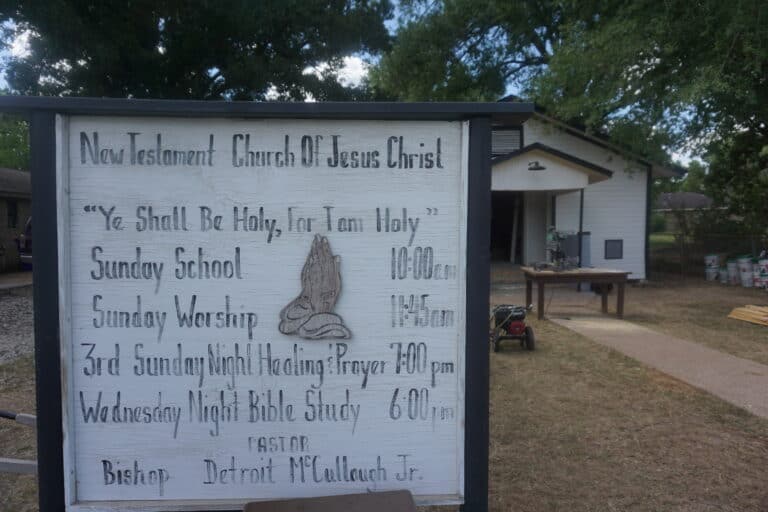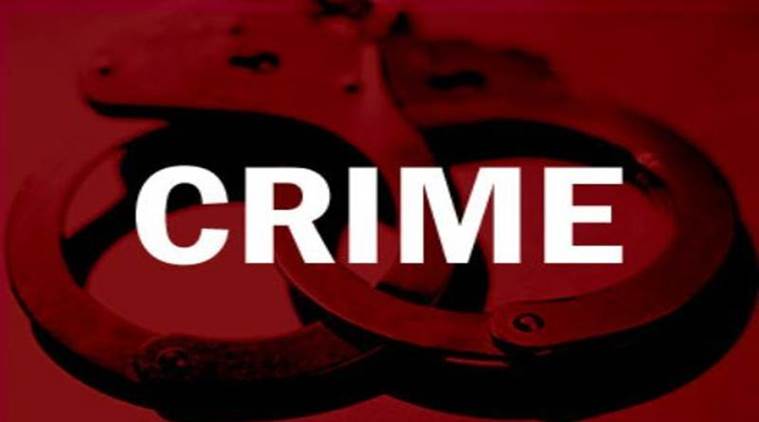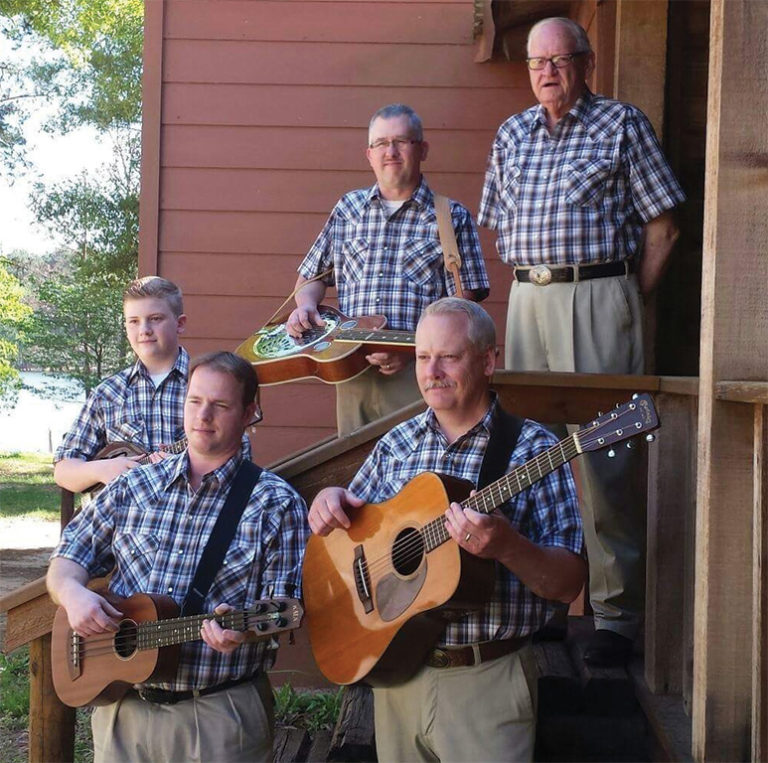Local Architect Student Studies Mary Allen College

By Camryn Craven
Special to The Messenger
CROCKETT – In 1978, a Historical Marker was placed on the hallowed grounds of college hill where the administration building of Mary Allen College remained. Ms. Eliza Bishop was instrumental in Mary Allen Seminary becoming a National Registry of Landmarks in 1978. Now in 2023 a local Texas A& M graduate student studies the possibilities of the now standing building on college hill. Camryn Craven takes on the Mary Allen College standing administration building for her class project in which she made an A. In her own words of discovery, she elucidates her passion and reason for using the building as a class project:
If someone were to ask you where you thought the first college for African American Women in Texas was founded, what would your answer be? You would probably guess Houston, or San Antonio, or another large city, but the truth is it was founded right here in Crockett Texas in 1871. Mary Allen Seminary, also known as Mary Allen Junior College, or just simply Mary Allen College, rests less than a mile from the town square. Chances are, if you are a Houston County resident, you’ve driven past it numerous times and not given it a second thought.
The college began as a simple four story brick structure, then later expanded to twelve different buildings across 300 acres in its prime. Sadly, the college ceased all operations in 1972, and has been abandoned ever since. Today, only that one original building remains, dilapidated and decaying on a hill across from what used to be Rosemary’s Hilltop Kitchen. Incredibly, after 152 years, much of the main structure still stands, though the roof and all floors have collapsed in on themselves.
Now that you know a bit about this incredible historical landmark that calls our town home, allow me to introduce myself. Howdy! My name is Camryn Craven, and I was born and raised in Crockett. My dad, Dan Craven Jr, has worked as a veterinarian at Crockett Veterinary Hospital for 26 years. His father and my grandpa, Dan Craven Sr, taught mathematics and coached basketball at Crockett High school for 30 years. My mom taught at Crockett High School for nine years, and later Jordan School and Latexo High School for many more years. I attended Latexo High School, graduated valedictorian, and went on to pursue my Undergraduate Degree in Architecture at Texas A&M University. I have since earned my Bachelor’s Degree and am now pursuing my Masters.
Growing up in Crockett, the Mary Allen College was always in my peripheral vision. I would always glance at it, and wonder briefly why it was still standing, almost defiantly, against all the forces that fought against it. Rumors of it being haunted, daring teenagers exploring it at night, and the sheer size of the structure itself are just a few things that peaked my interest from an early age. However, under all the rumors and stories, lies a rotting old building that holds extreme historical and cultural significance for African American women and Crockett as a whole. When my professor this semester tasked each of us with finding an abandoned building to study and restore, of course Mary Allen was the first thing that came to my mind.

Fortunately, there has long been a driving force in the preservation of this historical landmark. The Mary Allen Museum, a small, local, non-profit organization within Crockett, has been working to preserve and restore the structure for years. Two organizations continued the legacy and history of Mary Allen College (The National Alumni Association of Mary Allen College and The Mary Allen Museum of African America Art and History, Inc). The National Alumni Association of Mary Allen College had to determine to continue the legacy despite a succinct interruption. Thirty-four annual scholarship banquets were held to provide young high school graduates, who were descendants of Mary Allen College alumni members, resources to attend college until the National Alumni Association was dissolved in 2016. The Last scholarship banquet was held in 2015 with Dr. Thelma J. Douglass as Mary Allen College’s guest speaker. The officers were Mrs. Elna J. Hopkins Kennedy, National President; Mrs. Pearline Perkins, National Secretary; Mrs. Maxine Minor, Houston Area Coordinator; and Mr. Lamar Gooden, National Treasurer. Over 110 students were awarded scholarships for their educational goal which was more than $225,000.
As Founder, and first President of the Mary Allen Museum of African American Art and History Inc, Mrs. Bragg gave her all to restore Mary Allen College’s education legacy. Community leaders who stood by her side or even served on the MAM Board were Mr. Otis Wooten, Mr. Jake Caprilian, Dr. Willie Wooten, Mrs. Agnes Rhoder, Ms. Roberta Mason, Mrs. Steve Lewis, Ms. Jenee, Bragg Guidry, Mrs. Jean Shepherd, Ms. Sandra Berry, Ms. Gloria Wooten, Ms. Cindy Garner, Mr. Nikita Warner, and others. The thought of Mary Allen having been reduced to a crumbling relic brought her to “tears most of the time,” she once stated. The school closed in 1978 when Mrs. Bragg began the crusade to save what was left of Mary Allen College.
Craven continues her observation. However, presumably due to lack of public knowledge or passion, the structure remains decaying to this day.
As an architecture student, the resilient existence and structure of the remaining building is even more impressive to me than most people. It is a full brick masonry structure, meaning all the walls are made of solid rows of brick. The exterior walls rise to four stories, boasting an impressive one foot and six inch thickness. We don’t see this very much at all any more in the architecture world, as the labor costs are so expensive, any brick buildings you see today are more than likely a thin brick veneer over a standard wood or steel stud wall. Masons hand laid each and every single brick that made up that building, 152 years ago, and all the original walls except one have remained standing. I had the opportunity to visit the site, and as you may imagine viewing the photos that follow, it is even more impressive to see in person. Remnants of the gorgeous cast iron moldings can still be seen above some of the windows. Inside, falling, are the remains of what used to be beautifully detailed coffered ceilings. The ruins of the building’s grand central staircase lay fallen just beyond the main entrance. Standing in the main foyer of the college, I could almost hear the laughter and chatter of the hundreds and maybe even thousands of young African American women that received their education inside. On the front steps, the words “summer of 1952” were scratched into the concrete by loving hands. The building has such character, such soul, and I firmly believe that it has been standing this long so that it can be restored again.
All this being said, how can we, as residents of Houston County, just stand by and let such a historical and culturally significant building rot away into dust? This building is a huge, wonderful part of Crockett’s history, and it should gain the recognition it deserves. It can help to educate others on why our town is so important, and on the differences that education and community can make on our future generations.
After visiting the site and studying the existing structure all semester, I believe that several things can be done to help restore and add on to what is left of the Mary Allen College, and I will share with you all my main ideas.
To begin, the remaining structure should be cleared of all debris and vegetation, and then reinforced using steel beams, columns, and cables. It is imperative that in the process of its restoration and preservation that the college’s history is honored, and we can do this by maintaining the building’s original purpose as a school, as well as using as many of the structures fallen bricks as we can in the new construction. I propose that we keep all the existing structure that we can, and then add a new one into the void left from the collapse of the Northeast corner. This way we can merge old and new, past, and present, preserve what’s left of the current structure and add a new one to serve the growing Crockett community.
The new structure can be a four story multi-use classroom and community center, connecting directly to the original. At the very least, after the structure has been reinforced in the original building, the first floor could be completely restored to connect it with the new one. I have been working on this project for several months now and hope to develop it enough to have some solid structural plans, floor plans and a 3-D rendering to showcase my ideas before the new year.
For now, I encourage all readers to research Mary Allen College. Find out ways you can help. Money designated for the restoration of the building will be placed in a separate account from the general operation of the Mary Allen Museum. Hopefully, many will see the need to donate and raise money. As citizens of Houston County, it is our responsibility to respect, acknowledge and preserve our history. I hope that I can help contribute to that.
Thanks, and gig ‘em!






